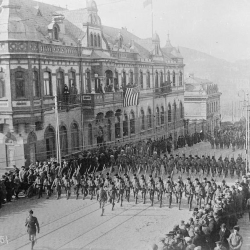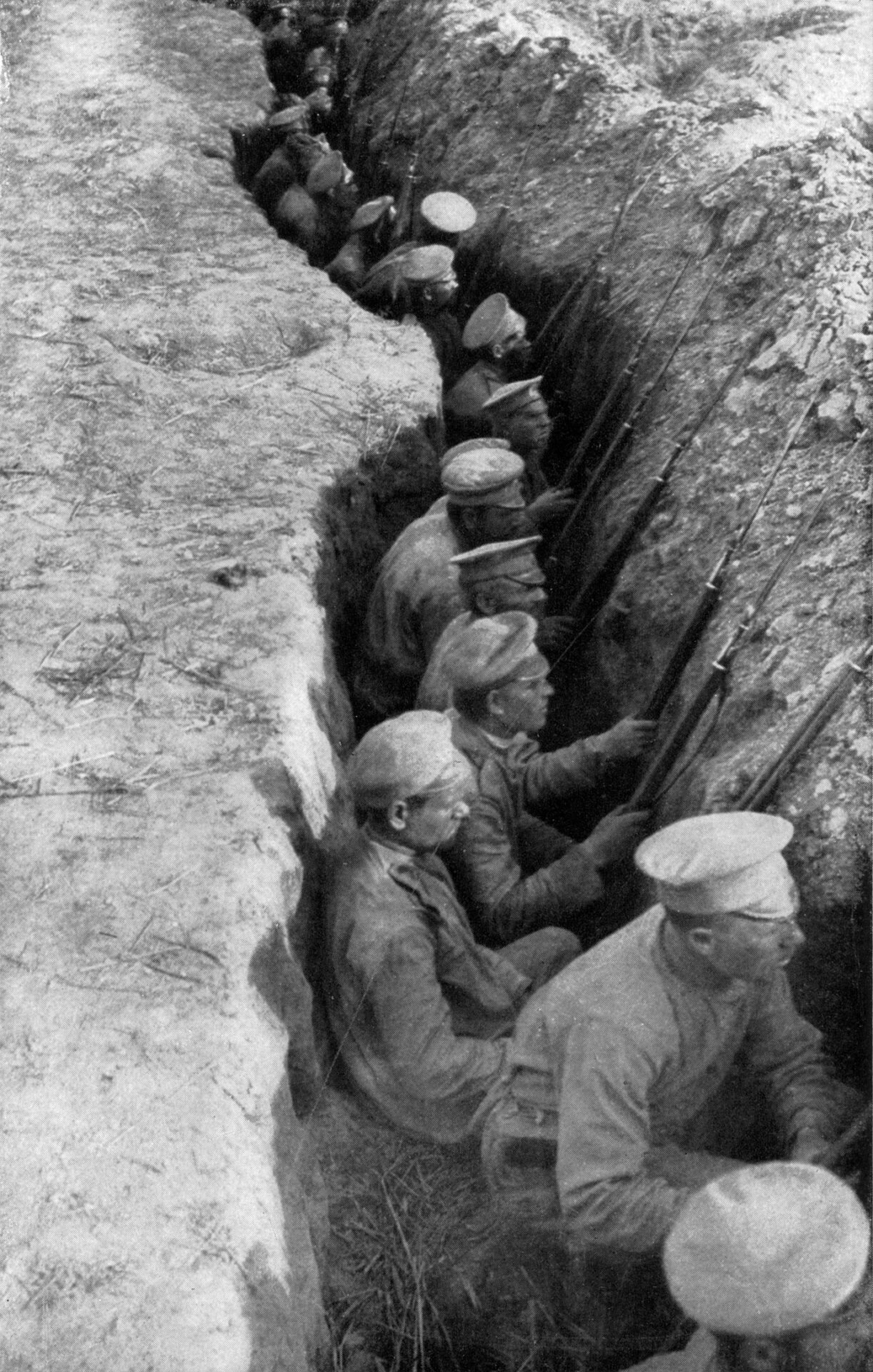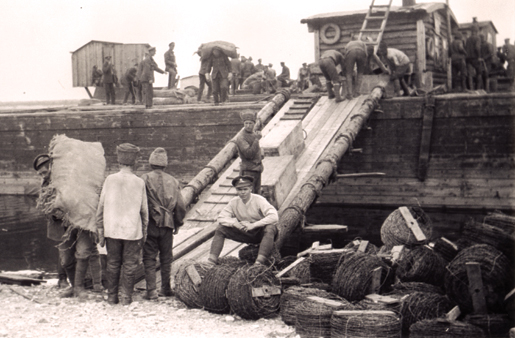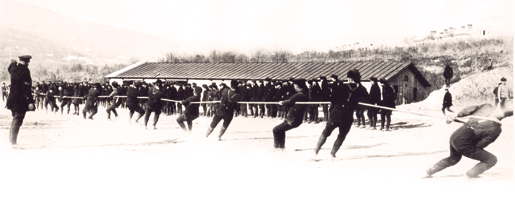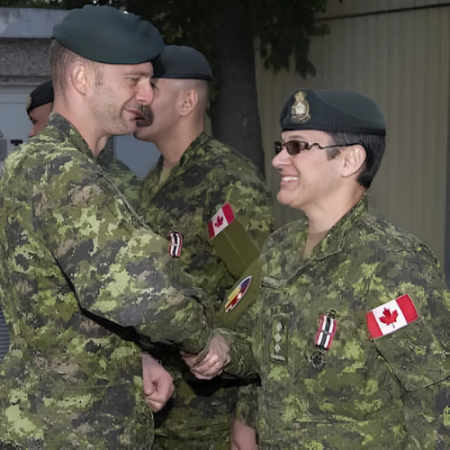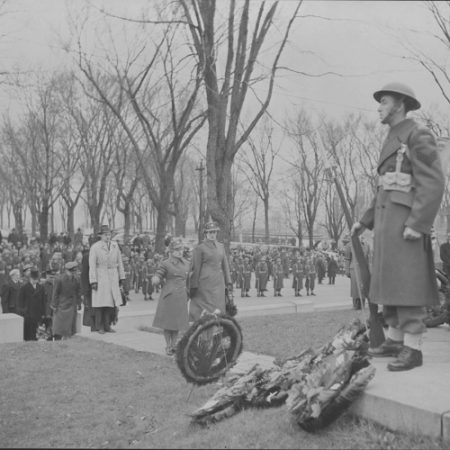In October 1917, the Russian army’s major military losses along with an economic crisis and the unpopularity of Tsar Nicholas II triggered uprisings among large swaths of the Russian population. The Tsarist regime was overthrown and, in November, the first Communist government took power under the leadership of Vladimir Lenin. However, this did not stop the violence, and major battles were fought until 1921 between Lenin’s new Red Army and the White Army, which was a group of counter-revolutionary forces that remained loyal to the Tsarist regime and that ardently opposed communism.
When the new Russian regime came to power, many nations declared their support for the White Army. Therefore, from 1918 until the end of the conflict, about ten Allied powers, from the United States to Japan, sent over 140,000 soldiers to Siberia to fight the Communist regime. Just weeks before the end of the greatest war ever known, Canada also took up arms in this colossal international operation. From October to December 1918, over 4,000 soldiers and officers from the Canadian Siberian Expeditionary Corps arrived at the port of Vladivostok. However, the mission did not go as expected and involved bouts of insubordination and a general lack of organization.
A specific political context
Canada joined the expedition as part of a broader and more complex political context. The war in Europe was not yet over, and Prime Minister Robert Borden had already announced his desire to support Great Britain in its mission to Siberia. For him, the expedition was another chance to show Canada’s loyalty to its traditional ally and an opportunity to continue the war effort. The First World War was not yet over when the Communists took power in Russia, and Germany would only surrender in November 1918, or one month after Canadian troops started arriving in Vladivostok. The initial months of the mission targeted particular military needs: prevent very important Russian resources from falling into German hands, reopen the Eastern Front with a Russia sympathetic to the Allies, and save the Czechoslovak Legion forces trapped in Russia.[1]
But at the end of the war, the fight against Germany quickly turned into a fight against the Russian Bolsheviks, as Bolshevism was perceived as an even greater threat than that posed by the Triple Alliance nations. The end of the war also coincided with a rise in worker rights, as support for worker struggles grew alongside a general sense of dissatisfaction worldwide, and Canada was no exception. While some proponents simply wanted the war to end, the nations on the winning side wanted to stamp out Bolshevism as quickly as possible to keep it from spreading to their own countries. In other words, they wanted to ensure that the overthrow of the tsars did not lead to a definitive victory for Communism.
The Borden government’s motivation for sending troops from Canada as a Commonwealth Dominion to support Great Britain and fight Bolshevism did not receive much support from the general public or the military. A new foreign military intervention right after one of the greatest wars in history was also a hard sell, and mobilizing troops of motivated soldiers was not easy. In fact, most of the soldiers in the Expeditionary Corps were drafted. These soldiers also came mainly from Quebec, where opposition to the war was strongest, although anti-draft sentiment was also high among other Canadian troops. The Canadian army also tried to recruit many Russian-born soldiers to accompany the unit and help with communication during the mission. However, they discovered that many of them had strong Bolshevik sympathies. In the end, only 18 soldiers of Russian origin were allowed to leave Canada. Despite these impediments, the Canadian army assembled a considerable initial force of over 4,000 soldiers and officers for the Siberian Expeditionary Force.
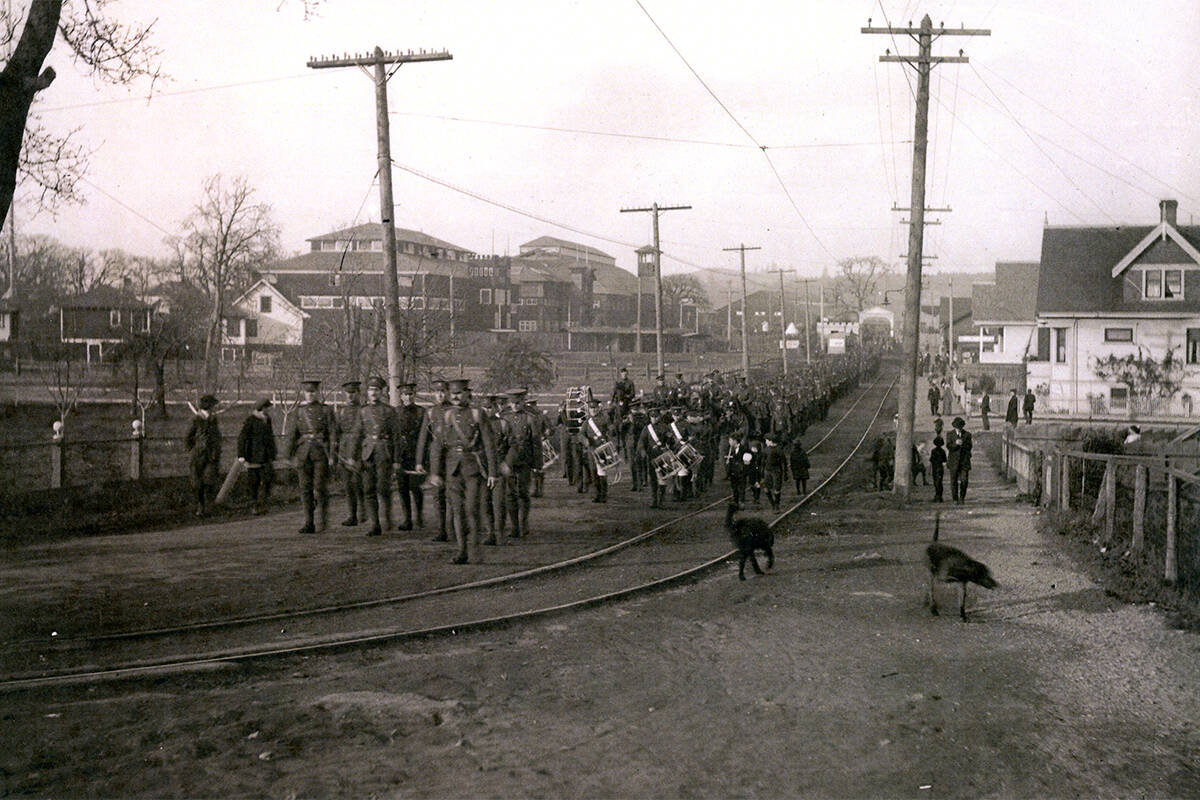
Yet discontent spread among many soldiers who prepared to leave for Siberia. In Victoria, where they were garrisoned before their departure, disobedience was common and many soldiers were accused of going AWOL. Other soldiers showed sympathy for and interest in the Bolshevik cause. When a local socialist group held a meeting on December 8, 1918, almost 700 soldiers from the Expeditionary Force attended. In his work, historian Benjamin Isitt reports the fears of a Canadian soldier loyal to the mission who told his superior officer that all of his fellow soldiers were Bolsheviks, that they were continually talking about class struggle, and that they were figuring out how to join the Red Army once in Siberia.
The men’s discontent ended in mutiny on December 21, 1918, or the day they were to leave for Siberia. On the way to Victoria Harbour, some soldiers refused to follow their officers’ orders and abandoned their posts. After a first attempt to bring them back by firing shots into the air, the officers ordered the remaining troops to force their fellow soldiers onto the ship. According to witness accounts, the mutineers were hit with belts and forced aboard at gunpoint. During the voyage, many of the mutiny leaders were punished before being returned to their ranks.
Canadian participation in Siberia
When members of the Canadian Siberian Expeditionary Force arrived at the port of Vladivostok in mid-January 1919, they found a city in a terrible state. The war had forced many refugees to flee to eastern Russia’s largest metropolitan area. However, the city was not prepared to take in so many people at once, and its infrastructure was completely insufficient to meet the influx. Poverty was rampant among the refugees trying to eke out survival. Vladivostok was also a place of crime and war, as members of both armies carried out clandestine operations there and sometimes even fought openly in its streets!
Members of the Expeditionary Force pose in front of a truck somewhere in Vladivotok (source: Wiki Commons).
The war was nevertheless a complex situation. After all, the Bolsheviks in Vladivostok did not form a single organized unit. The group was comprised of disparate sympathizers and fighters who would sometimes join forces for specific operations. But as many observers have noted, the very definition of a Bolshevik was quite vague, as anyone who found themselves on the wrong side risked being branded a Bolshevik and punished, if not simply publicly executed.
The Expeditionary Corps was in a special situation, as many disagreements between foreign governments and the White Army prevented them from being deployed to the front. In fact, the Canadian soldiers did not see much fighting. In Vladivostok, they mainly kept the peace at the port and assisted local law enforcement. Rather than fighting Lenin’s Red Army on the front lines, the Canadians provided security at the port and made sure that commercial operations could continue.
For many soldiers, this change was a disappointment, and boredom quickly set in. At the start of the operation, the officers valiantly tried to keep the soldiers occupied through military exercises. This may have kept them busy for a while, but the tedium ultimately weighed on them. Given its poverty and daily violence, Vladivostok did not offer much in the way of entertainment. When the soldiers weren’t stationed at the port or helping the authorities elsewhere, they did not have anything else to do. For some, this lack of activity was a terrible fate. After leaving their posts, the men would be ordered to go back to their barracks right away. Fortunately, plenty of activities were organized to keep them busy. Theatrical and musical performances were staged to entertain the men, with some success. Alcohol was unfortunately the main way that many soldiers got through the long days.
It is also important to note that some members of the Expeditionary Force carried out military operations outside Vladivostok. In late December 1918, 55 soldiers were sent to Omsk, which was the capital for the White Army. Once there, the men did not do much more than their fellow soldiers back in Vladivostok. However, they did risk great danger when travelling by train. In 1918 and 1919, Canadian soldiers made two trips on the Trans-Siberian Railway to work at the Omsk garrison. During these very long journeys, they were exposed to elements of the ongoing war, such as ambushes by the Red Army, sabotage by rebels, labour disputes by railway workers, and breakdowns on the train network. While these problems posed risks to the soldiers, they above all slowed down what were already terribly long and arduous journeys. In May 1919, the mission in Omsk ended; on their way back to Vladivostok, the soldiers were attacked by four Bolshevik snipers. No casualties were reported.
In addition to the Omsk mission, the Canadians were part of another military operation in the village of Shkotovo. Before the mission, a large Bolshevik force had attacked a White Army garrison to rescue prisoners. In response, the Expeditionary Force and troops from the forces of other countries were sent to neutralize any Communist presence in the village. The Canadians arrived to find the village completely empty except for some older residents. What’s worse, the only injuries during the mission were sustained by a Japanese and a Canadian soldier, who were wounded by a French soldier testing his revolver. The Corps then went back to Vladivostok.

The end of a fruitless mission
The Corps returned to Canada without incident on June 5, 1919, after considerable public pressure in major Canadian cities to end the mission. It was becoming clear that the White Army was going to lose the war due to a lack of resources and general support from the population. In fact, the war had been lost even before the Canadians arrived, as the White Army had adopted sheer brutality in their tactics in lieu of military competence. The generals of the White Army lost favour with foreign powers, which was not helped by the political games and tensions between the different nations involved, each of which had its own interests in the mission.
The war against the Bolsheviks was a major defeat for all forces involved, and the Canadians’ participation had little impact. In addition to a complete lack of motivation on the part of the troops, the Corps’ top brass showed poor organization and simply improvised in the field while the other foreign corps and the White Army struggled to communicate with each other.
The Canadian Siberian Expeditionary Force’s mission was a long, drawn-out failure: without a concerted effort from everyone involved, the Canadian Corps could not have done any better than it did. The only good decision in this case would have been not sending them at all.
[1] During the First World War, thousands of Czech and Slovak soldiers fighting for Tsarist Russia found themselves completely stranded in Russia when the revolution broke out. With no chain of command with the Russian army, the Czechoslovak Legion fought the Bolsheviks so that they could return home and gain political favours from the Allied countries.
Cover photo: The Expeditionary Corps celebrates the armistice in the streets of Vladivostok (source: Wiki Commons).
Article written by Julien Lehoux for Je Me Souviens. Translated by Amy Butcher (traductionsamyb.ca).
In addition:
On May 19, 2023, Julien Lehoux was on Histoire de passer le temps to present the history of the Siberian Expeditionary Force. To listen to his segment, in french, click here! With the participation of Frédérick Poulin and Rania Ikram Djermane as guests, Julien Legris as host and Daniel Lemire as sound engineer.
Sources:
- “Canadian Siberian Expeditionary Force“, L’Encyclopédie Canadienne/The Canadian Encyclopedia.
- “Siberian Expeditionary Force“, Musée canadien de la guerre/Canadian War Museum.
- “First World War – Siberia“, Gouvernement du Canada/Government of Canada.
- “The Siberian Expedition“, Legion Magazine.
For a more academic approach:
- Benjamin Isittt, “Mutiny from Victoria to Vladivostok, December 1918 “, The Canadian Historical Review, vol. 87, no. 2, juin 2006, pp. 223-264.
- Benjamin Isittt, From Victoria to Vladivostok: Canada’s Siberian Expedition, 1917-19, Victoria, UBC Press, 2010, 352 p.
- Ian C.D. Moffat, “Forgotten Battlefields – Canadians in Siberia 1918-1919“, Canadian Military Journal, vol. 8, no. 3, pp. 73-83.

